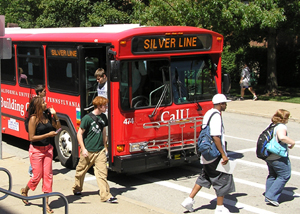|
Transportation planning plays a fundamental role in the state, region or community’s vision for its future. It includes a comprehensive consideration of possible strategies; an evaluation process that encompasses diverse viewpoints; the collaborative participation of relevant transportation-related agencies and organizations; and open, timely, and meaningful public involvement.
What is the transportation planning process?
Transportation planning is a cooperative process designed to foster involvement by all users of the system, such as the business community, community groups, environmental organizations, the traveling public, freight operators, and the general public, through a proactive public participation process conducted by the Metropolitan Planning Organization (MPO), state Department of Transportation (state DOT), and transit operators. Figure 1 illustrates the transportation planning process.
Transportation planning includes a number of steps:
- Monitoring existing conditions;
- Forecasting future population and employment growth, including assessing projected land uses in the region and identifying major growth corridors;
- Identifying current and projected future transportation problems and needs and analyzing, through detailed planning studies, various transportation improvement strategies to address those needs;
- Developing long-range plans and short-range programs of alternative capital improvement and operational strategies for moving people and goods;
- Estimating the impact of recommended future improvements to the transportation system on environmental features, including air quality; and
- Developing a financial plan for securing sufficient revenues to cover the costs of implementing strategies.
Related Links
|
 California University of Pennsylvania students disembark the MMVTA's Silver Line on their way to class. Visit www.mmvta.com for more information.
California University of Pennsylvania students disembark the MMVTA's Silver Line on their way to class. Visit www.mmvta.com for more information.
|